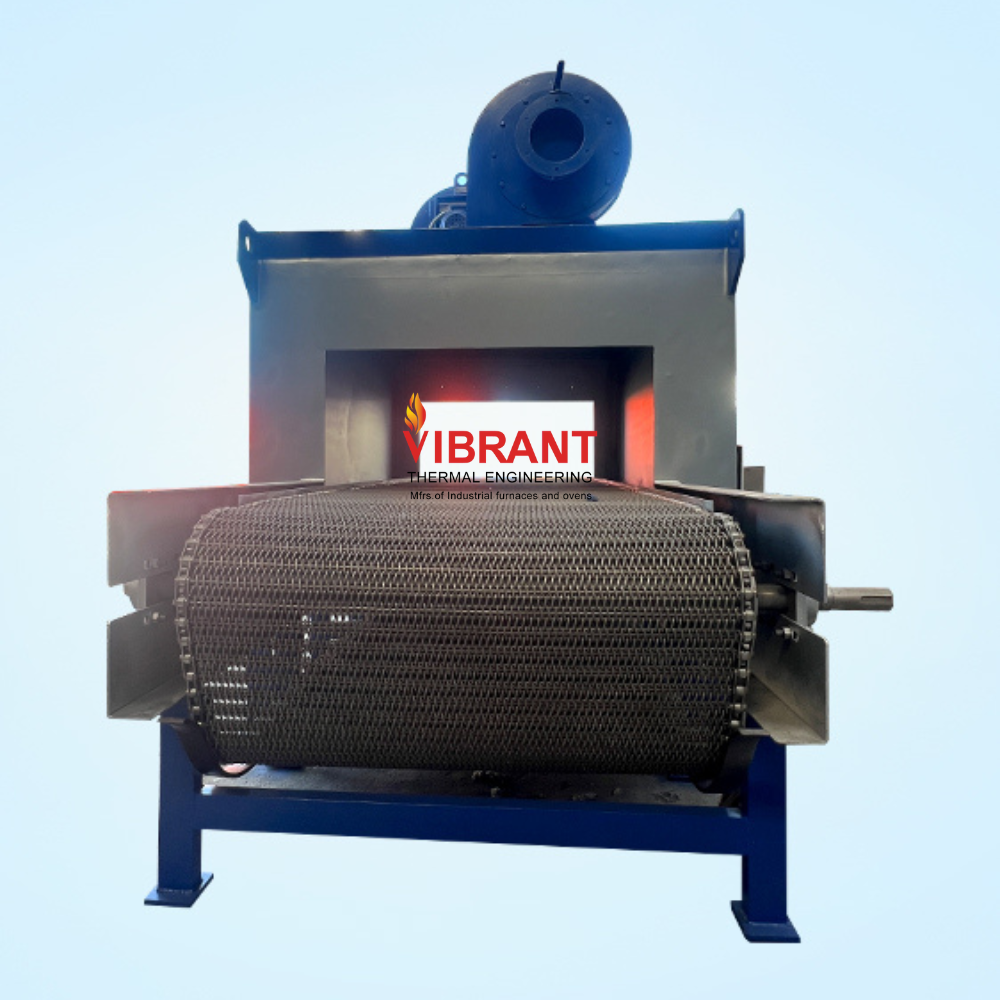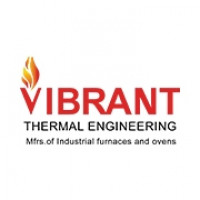A Complete Guide to Continuous Furnace

Strong 8k brings an ultra-HD IPTV experience to your living room and your pocket.
A continuous furnace is an industrial furnace that transports process pieces or material via a conveyor or belt to the primary heating chamber for quick thermal processing. It is designed for quick drying and curing of products and is an ideal solution for medium and high-volume production. These furnaces also go by the terms continuous furnaces, continuous process furnaces, and conveyor belt furnaces.
A continuous belt furnace often has tunnel construction and is divided into numerous regulated zones, such as preheating, binder burnout, heating, firing, and cooling. These industrial furnaces also have rapid thermal responses and consistent, steady temperature distribution.
How Does a Continuous Furnace Work?
The basic setup of a continuous furnace includes:
Heating zones: These are different sections of the furnace set at various temperatures depending on the process.
Conveyor or transport system: This could be rollers, belts, mesh, or walking beams that move materials through the furnace.
Control systems: These monitor and adjust the temperature, speed, and atmosphere inside the furnace to ensure everything runs smoothly.
Cooling zones (in some furnaces): After heating, materials may be cooled gradually to prevent damage or warping.
Benefits of Continuous Furnaces
Continuous Furnaces may perform a wide range of metallurgical operations, including brilliant annealing, brazing, process curing, sintering, stress relief, and tempering, and they can support a variety of heating methods. They are one of the several heat treatment solutions. Even within the category of continuous furnaces, there is a wide range of options based on the criteria you want and the design concepts utilized by the manufacturer. However, there are some obvious benefits to adopting continuous (and semi-continuous) furnace systems. Here are some of these benefits:
Large and convenient production rates: Continuous furnace systems may produce very high production rates in an indexed or continuous mode.
Energy Efficiency: Continuous furnace systems are significantly more energy efficient than other heat treatment alternatives. They are highly efficient whether you use a gas or electric equipment.
Cost: Using a continuous furnace system results in the lowest cost per item, especially when compared to alternative heat treatment processes.
Versatility: Continuous furnace systems can be built to incorporate some or all activities, such as washing, quenching, carburizing, nitriding, neutral hardening, nitrocarburizing, cooling, tempering, storage, and loading/unloading.
Customizability: While you can buy conventional continuous furnace systems, you can also have your own bespoke system designed for you based on the amount of space you have in your factory and the sort of application you'll be utilizing the equipment for.
Some other benefits include:
- Superior part-to-part temperature homogeneity.
- Increased throughput
- Process Combination
- Lower initial investment.
- Reduced changeover times.
- Part loading flexibility
Types of continuous furnaces
As previously indicated, continuous furnaces are quite adaptable. This is due in part to the large number of continuous furnace choices available on the market. Here are a few instances.
Mesh belt furnace: A mesh belt furnace produces heat treatment results that are easily reproducible, making it an ideal piece of equipment for treating bulk commodities and large quantities of tiny parts while reducing energy consumption and increasing production uptime.
Rotary hearth furnaces are intended for reheating pretreated workpieces and carburizing shallow case depths. They have a high throughput, making them particularly useful and appropriate for processing large amounts of the same item.
Endothermic generators have a modular construction and may be purchased in a variety of sizes based on your heat treatment requirements. The generator comes pre-configured with programs for your convenience, making it a simple option to use.
Pusher furnaces are perfect for the continuous processing of items in a safe gas environment. The furnace's hearth construction is exceedingly solid and robust, allowing it to withstand exceptionally heavy loads.
Applications of continuous furnace
A conveyor furnace is an industrial furnace that transports goods from the loading station to the unloading station via a conveyor. Continuous conveyor furnaces can perform a wide range of heat treatment processes, including cementation, carbonitriding, tempering screws, nuts, bicycle parts, hand tools, hardening mechanical parts of automotive accessories, fasteners, chains, bearings, tools, and other products, and finishing with a sharp cooling in oil or water, polymers, and salts.
- Carburizing and hardening of metal items, including self-tapping screws, self-drilling screws, and wood screws.
- Hardening of fasteners.
- Thermal processing of bicycle components, motorbikes, and automobiles.
- Heat treatment for hand tools
Conclusion
The continuous furnace is a critical tool in modern manufacturing. It helps industries achieve higher productivity, better quality, and greater energy efficiency. From steel plants to electronics factories, continuous furnaces play a key role in shaping the products we use every day.
Frequently Asked Questions
1. What is the main difference between a batch furnace and a continuous furnace?
A batch furnace processes one load at a time, while a continuous furnace operates non-stop, heating materials as they move through the system. This makes continuous furnaces more efficient for high-volume production.
2. What materials can be treated in a continuous furnace?
Continuous furnaces can treat metals, ceramics, glass, and even certain polymers. They are used in industries like automotive, aerospace, electronics, and metallurgy.
3. Are continuous furnaces expensive?
They do have higher upfront costs compared to batch furnaces, but they save money in the long run through lower energy use, higher throughput, and reduced labor costs.
4. How is temperature controlled in a continuous furnace?
Advanced sensors and automation systems continuously monitor and adjust the temperature in different zones to ensure uniform heating.
5. Can a continuous furnace be customized?
Yes, manufacturers can design furnaces to fit specific production needs, including different lengths, heating zones, transport systems, and atmospheres (such as vacuum or inert gas).
Note: IndiBlogHub features both user-submitted and editorial content. We do not verify third-party contributions. Read our Disclaimer and Privacy Policyfor details.


